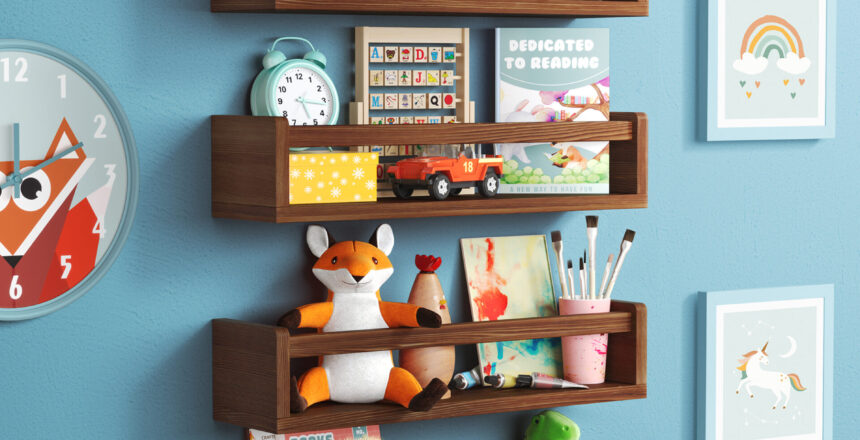Creating a nursery that’s both functional and delightful is every parent’s dream. A nursery book shelf can be more than just a place to store books; it can be the centerpiece of your baby’s room, sparking their imagination and encouraging a love for reading from an early age. With a bit of creativity and thoughtful planning, you can transform a simple book shelf into a dynamic, multifunctional space that grows with your child. In this article, we’ll explore 10 creative nursery book shelf hacks every parent should know, ensuring your baby’s nursery is as stylish as it is practical.
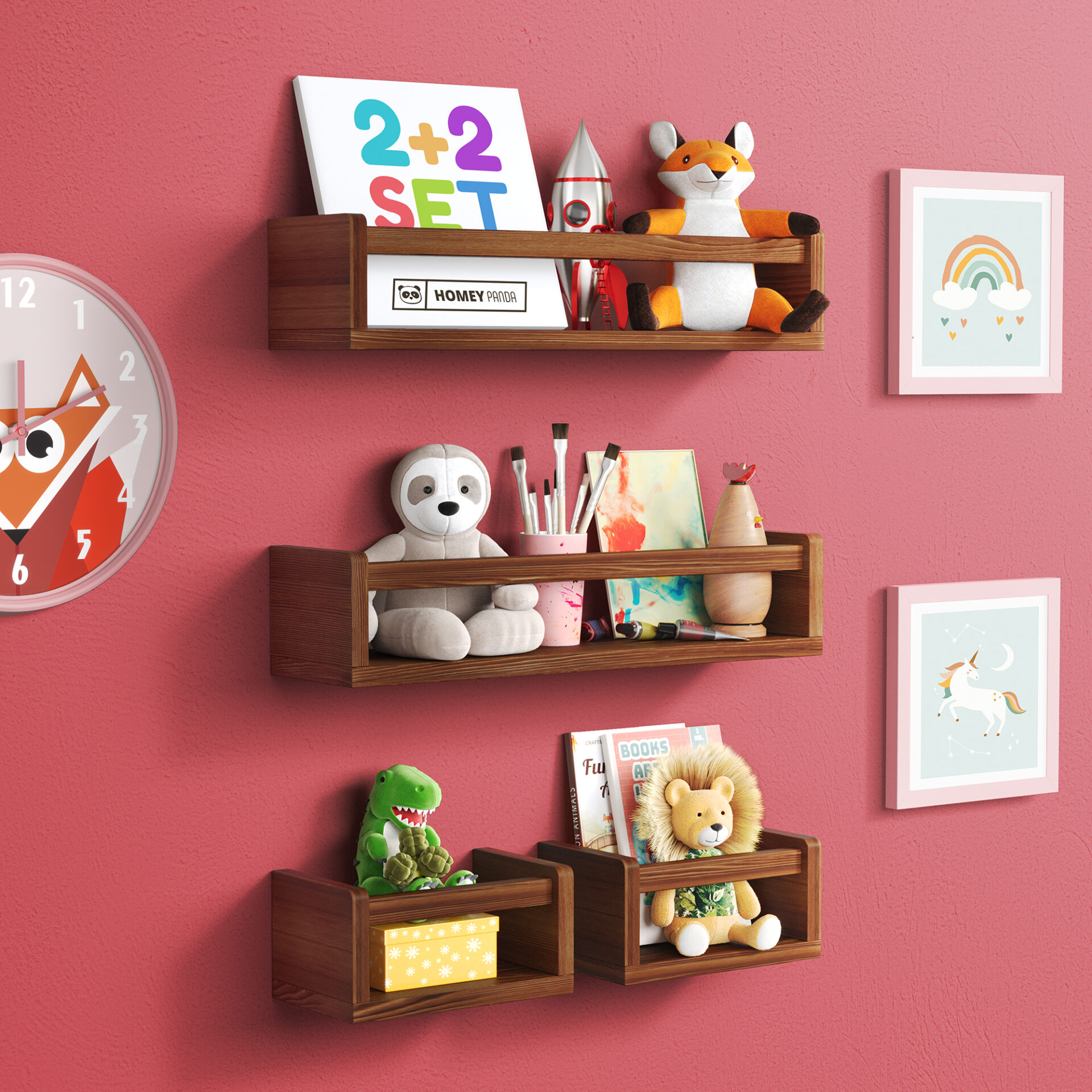
1. Maximize Space with Floating Shelves
One of the most effective ways to make the most of your nursery’s space is by using floating shelves. Unlike traditional bookcases, floating shelves don’t take up any floor space, making them ideal for small rooms or for adding storage without crowding the room. You can arrange them in various patterns—stacked vertically, arranged in a zigzag, or placed in a staggered formation—to create a visually appealing display.
Floating shelves offer a minimalist aesthetic, which can make even the smallest nursery feel open and airy. For a more dynamic look, consider mixing shelves of different lengths or depths. This not only adds visual interest but also allows you to store a variety of items, from large picture books to small decorative objects.
Installing floating shelves at different heights is another smart strategy. Place lower shelves within your child’s reach so they can easily grab their favorite books. Higher shelves can be reserved for items you don’t want your child to access unsupervised, such as fragile keepsakes or heavier books. As your child grows, you can adjust the height of the shelves or add more to accommodate their expanding collection.
The Homeypanda nursery book shelf, which comes with mini shelves that can be mounted at various heights, is an excellent choice for parents looking to maximize space without sacrificing style. These mini shelves are not only adjustable but also sturdy enough to hold a variety of books and toys, making them a versatile addition to any nursery.
Tips for Installing Floating Shelves:
Mix and Match: Combine floating shelves with other types of storage, such as cubbies or baskets, for a more eclectic and functional setup.
Anchor Securely: Ensure that floating shelves are properly anchored to the wall to support the weight of books and other items.
Create a Gallery Wall: Arrange books on floating shelves as you would art, turning them into a colorful gallery wall that doubles as a book display.
2. Incorporate Book Baskets for Easy Access
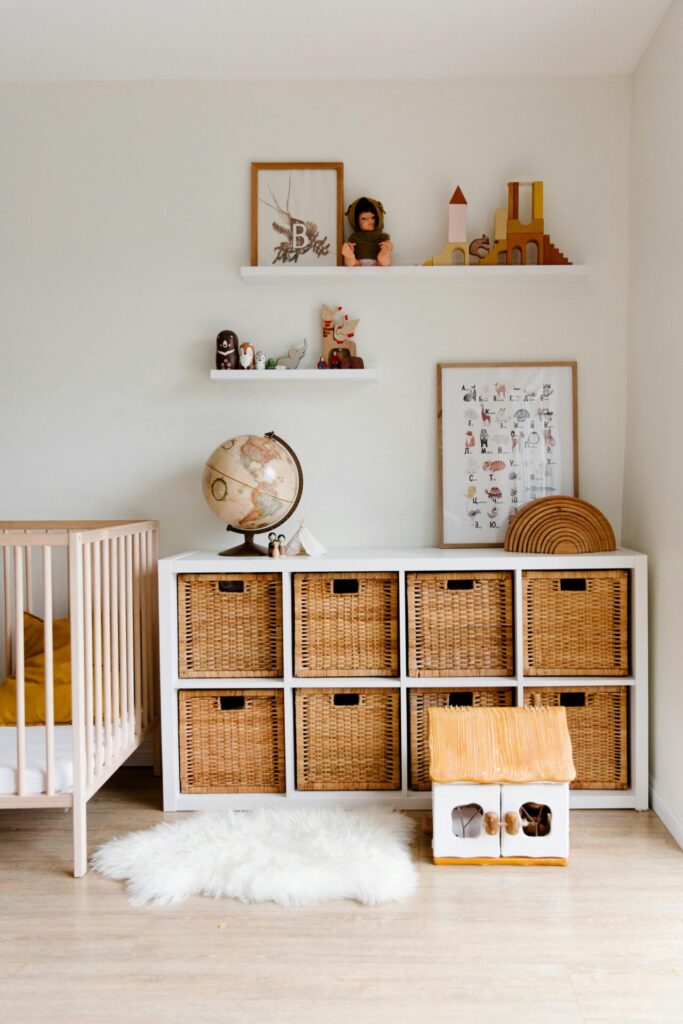
While a traditional nursery book shelf is great for displaying books, adding book baskets can enhance both functionality and accessibility. Baskets are perfect for storing board books or other small items that might get lost on larger shelves. Place these baskets on lower shelves or even on the floor, so your little one can easily access their favorite stories during playtime.
Book baskets offer a flexible storage solution that can evolve as your baby grows. For example, in the early months, you might use a basket to store cloth books or sensory toys. As your baby becomes a toddler, the basket can hold more complex picture books or even small puzzles. The versatility of baskets makes them an essential component of a well-organized nursery book shelf.
Another advantage of book baskets is their portability. Unlike fixed shelves, baskets can be moved around the room, making it easy to bring a selection of books into the living room, play area, or even outside for some fresh air reading. This mobility encourages reading in different environments, helping your child associate books with fun and relaxation no matter where they are.
The Homeypanda nursery book shelf’s design allows for easy integration of book baskets, offering a perfect combination of fixed and flexible storage solutions. With its mini shelves that can be customized to fit different basket sizes, the Homeypanda book shelf ensures that your nursery remains organized and clutter-free.
Tips for Using Book Baskets:
- Rotate Books Regularly: Keep the selection in the baskets fresh by rotating the books every few weeks. This keeps your child engaged and excited about reading.
- Choose Sturdy Baskets: Opt for baskets made of durable materials that can withstand daily use. Woven baskets or fabric bins are both sturdy and stylish.
- Label the Baskets: Use labels to identify the contents of each basket, making it easier to find specific books or toys.
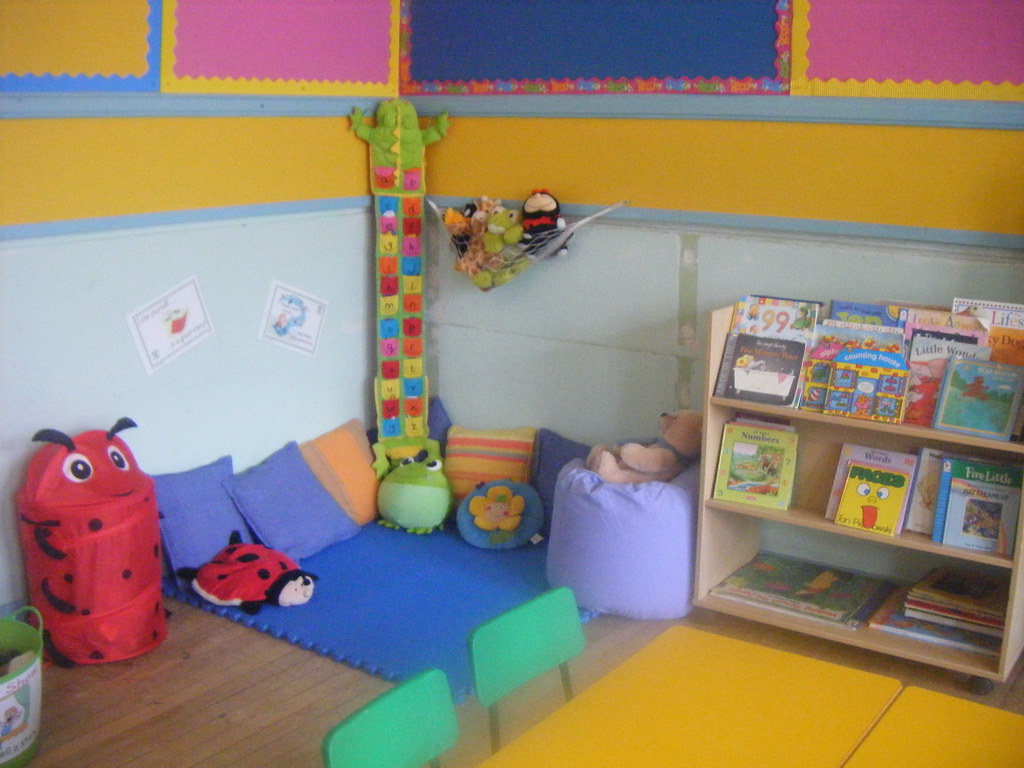
3. Create a Themed Display with Picture Ledges
Picture ledges are an often-overlooked yet incredibly versatile option for creating a themed nursery book shelf display. These narrow shelves are designed to hold picture frames but are equally adept at displaying books, especially when you want to showcase their covers. This makes them ideal for creating a rotating gallery of your child’s favorite books, organized by theme, season, or color.
One of the great things about using picture ledges for book storage is that they make it easy to swap out books whenever you like. For instance, you could create a winter-themed display with holiday books and snowy scenes, then transition to springtime stories as the seasons change. This keeps the nursery decor fresh and exciting, while also introducing your baby to the concept of seasons and special occasions.
Picture ledges also encourage independent exploration by placing books at your child’s eye level. When your baby can see the covers of their favorite books, they’re more likely to reach for them, which can lead to spontaneous reading sessions. The Homeypanda nursery book shelf’s mini shelves can be used similarly, offering customizable options to create a personalized display that evolves as your baby’s interests change.
Tips for Using Picture Ledges:
- Layer the Books: Place books of varying sizes and colors on the ledges to create depth and visual interest. You can also mix in small toys or decorative items to break up the rows of books.
- Curate a Seasonal Collection: Rotate the books on the ledges to reflect different seasons, holidays, or your child’s changing interests.
- Secure the Ledges: Make sure the ledges are securely attached to the wall, especially if they’re within reach of a curious toddler.
4. Use Labels to Keep Things Organized
Organization is key when it comes to maintaining a tidy and functional nursery, and labels are a simple yet effective tool for achieving this. By labeling each shelf, basket, or bin, you can create a system that makes it easy to find and return items, even if multiple people are using the nursery. Labels are especially helpful in categorizing your baby’s book collection, ensuring that you can quickly locate the perfect bedtime story or educational book.
Labels can be as creative or straightforward as you like. For a playful touch, you might use colorful cardstock, printed labels with fun fonts, or even chalkboard labels that can be updated as your child’s collection grows. For example, you could label one shelf “Bedtime Stories,” another “Animal Adventures,” and a basket “ABC Books.” This not only keeps the nursery organized but also helps your child begin to understand the concept of categorization.
As your baby grows older, involving them in the labeling process can be an educational activity. Let them help you decide where each label goes or what the labels should say. This can turn an organizational task into a learning opportunity, reinforcing their understanding of words and categories.
The Homeypanda nursery book shelf is designed with parents in mind, offering ample space for labels and other organizational tools. Its clean lines and simple design make it easy to attach labels that blend seamlessly with the rest of the nursery decor.
Tips for Labeling:
- Choose Durable Labels: Use labels that can withstand regular handling, especially if they’re within your child’s reach. Laminated labels or vinyl stickers are good options.
- Make it Fun: Incorporate playful elements into your labels, like using animal shapes or themed designs that match the nursery decor.
- Label Consistently: Stick to a consistent labeling system throughout the nursery to avoid confusion and make it easy for everyone to follow.
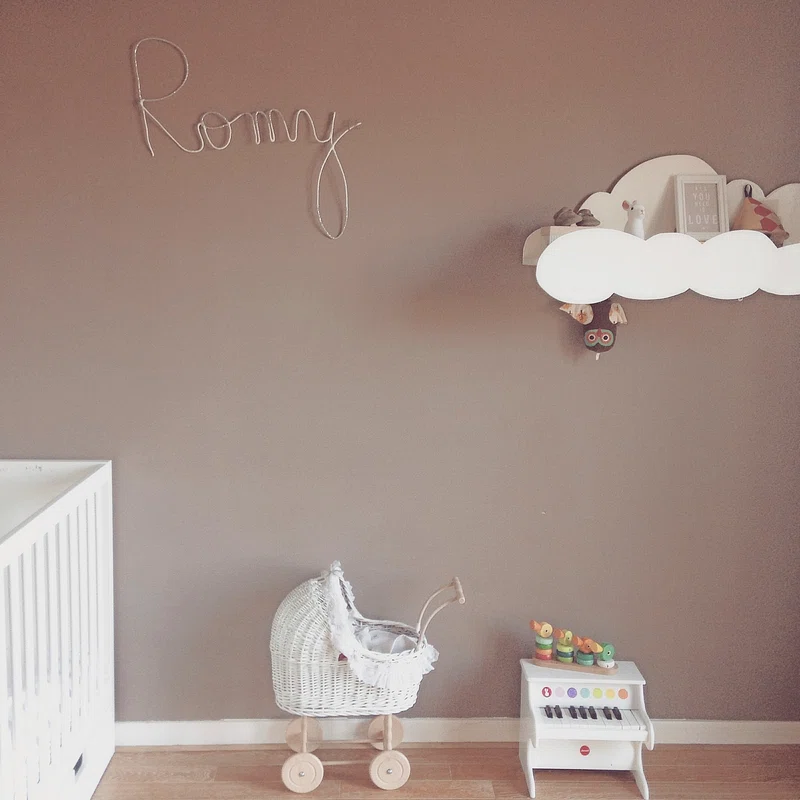
5. Add a Reading Nook Nearby
A well-designed nursery book shelf becomes even more inviting when paired with a cozy reading nook. Creating a dedicated space for reading not only encourages your baby to engage with their books but also provides a quiet retreat where they can relax and unwind. A reading nook can be as simple or elaborate as you like, depending on the space available and your personal style.
Start by choosing a quiet corner of the nursery where you can set up a soft rug or mat, some comfy pillows, and perhaps a small chair or beanbag. This will serve as the foundation of your reading nook. Next, position your nursery book shelf nearby so that books are always within easy reach. You might even hang a small shelf or basket in the nook itself to hold a rotating selection of favorite books.
Lighting is another important consideration for your reading nook. A soft, adjustable reading lamp can create a warm, inviting atmosphere, perfect for bedtime stories or afternoon reading sessions. If you have the space, consider adding a canopy or tent to create a cozy, enclosed feeling that makes the nook feel extra special.
The Homeypanda nursery book shelf, with its compact yet versatile design, is perfect for keeping your reading nook stocked with a rotating selection of books. Its mini shelves are ideal for holding a few current favorites, making it easy to switch out books as your baby’s interests change.
Tips for Creating a Reading Nook:
- Keep it Cozy: Use soft textiles, like plush rugs and fluffy pillows, to create a comfortable space where your child will love to curl up with a book.
- Make it Inviting: Add personal touches like a favorite stuffed animal or a small blanket to make the nook feel warm and inviting.
- Choose the Right Lighting: Use a soft, warm light that’s easy on the eyes but bright enough to read by. Consider a dimmable lamp for bedtime reading.
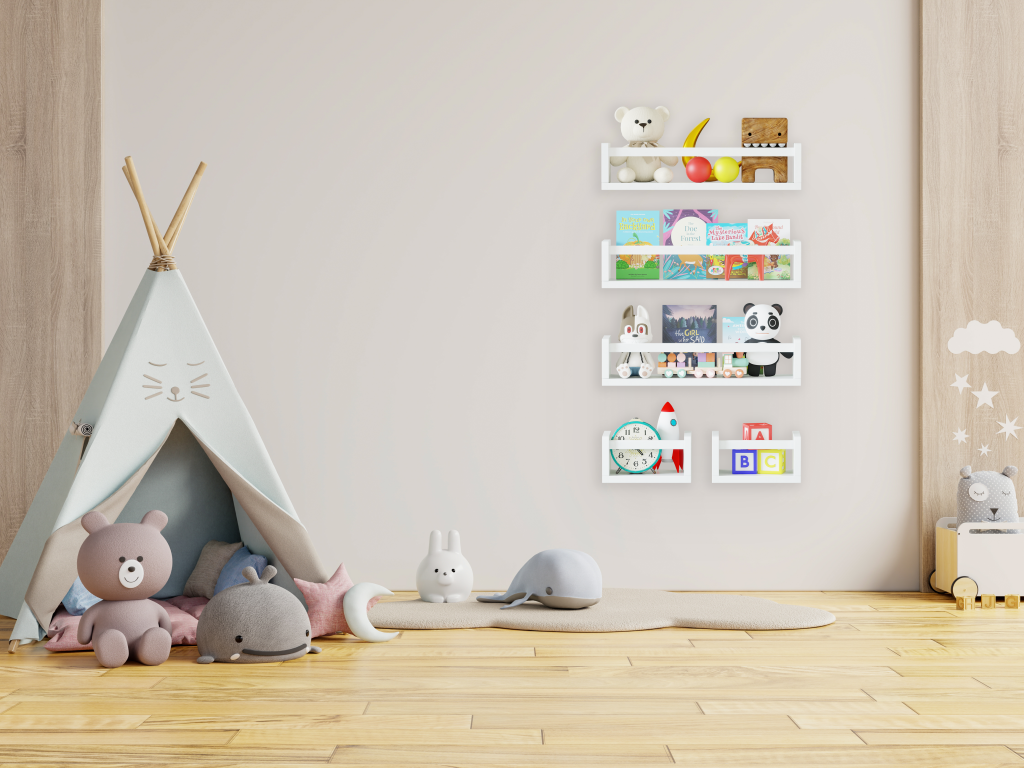
6. Incorporate Multi-Functional Furniture
When space is limited, multi-functional furniture can be a game-changer in your nursery. Instead of having separate pieces for storage, seating, and book display, consider furniture that combines these functions. For example, a bench with built-in storage underneath can serve as both a seating area and a place to keep books, toys, or blankets.
Another option is a bookcase that doubles as a play space or a storage unit with shelves that can be used for books, toys, and decor. These types of multi-functional pieces not only save space but also help keep the nursery organized, reducing the number of separate items you need to maintain.
The Homeypanda nursery book shelf is designed with this multi-functional approach in mind. It features mini shelves that can hold books, toys, or even small storage baskets, allowing you to create a custom storage solution that fits your needs. Whether you need extra space for toys or a place to display decorative items, the Homeypanda nursery book shelf offers the flexibility to adapt to your nursery’s evolving needs.
Tips for Choosing Multi-Functional Furniture:
- Consider Long-Term Use: Choose pieces that can grow with your child, offering flexible storage solutions that can be adapted as their needs change.
- Look for Hidden Storage: Furniture with built-in storage compartments is ideal for keeping the nursery tidy while maximizing space.
- Prioritize Durability: Opt for high-quality, durable materials that can withstand the wear and tear of daily use, ensuring the furniture lasts for years.
7. Repurpose Everyday Items as Book Storage
You don’t have to stick to traditional book shelves when it comes to storing your baby’s books. With a bit of creativity, everyday items can be repurposed into unique and stylish storage solutions. This not only adds a personal touch to your nursery but also offers an eco-friendly way to organize your child’s books.
For example, spice racks can be mounted on the wall to hold small board books, turning an ordinary kitchen item into a functional nursery accessory. Old crates or wooden boxes can be stacked to create a rustic, modular bookcase that adds character to the room. Even an over-the-door shoe organizer can be repurposed to store books, keeping them off the floor and within easy reach.
Repurposing items you already have is not only cost-effective but also adds a unique, personalized touch to the nursery. These DIY storage solutions can reflect your personal style, whether you prefer a modern, minimalist look or something more eclectic and playful.
The Homeypanda nursery book shelf, while perfect on its own, can also complement these repurposed items, creating a cohesive storage system that combines the best of both worlds. With its clean lines and versatile design, it fits seamlessly into a variety of nursery styles.
Tips for Repurposing Items:
- Think Outside the Box: Look around your home for items that could be repurposed, such as baskets, trays, or even small furniture pieces.
- Customize with Paint: Give repurposed items a fresh look by painting them to match your nursery’s color scheme.
- Keep Safety in Mind: Ensure that any repurposed items are safe for use around children, with no sharp edges or hazardous materials.
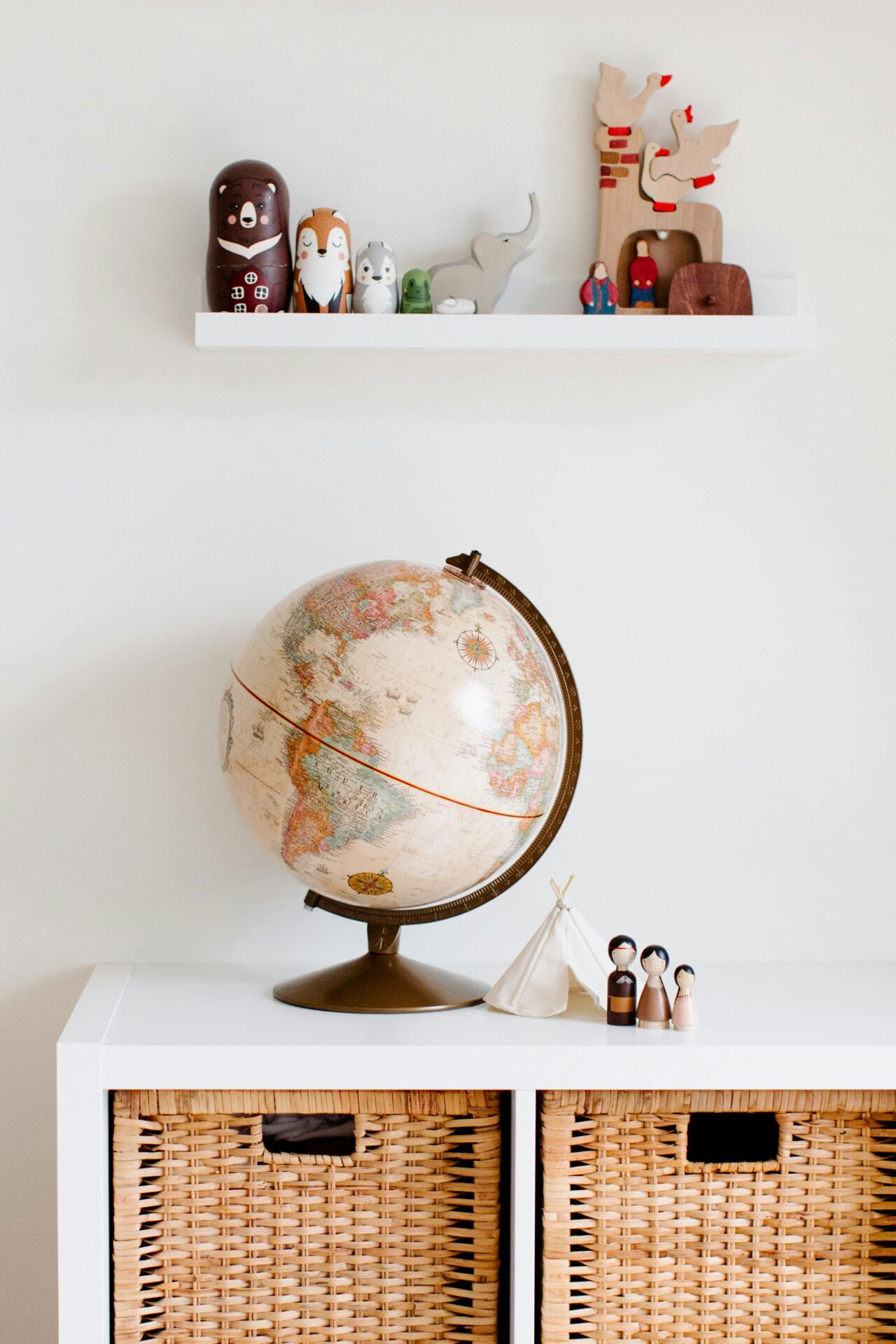
8. Rotate Books Seasonally
One of the simplest yet most effective ways to keep your nursery book shelf fresh and engaging is by rotating the books on a seasonal basis. This not only introduces your baby to the concept of seasons but also keeps their reading material varied and exciting. By focusing on different themes throughout the year, you can align your book selection with holidays, weather changes, or even your baby’s evolving interests.
For example, in the winter months, you might showcase books about snow, winter holidays, or cozy indoor activities. As spring arrives, swap these out for books featuring flowers, animals, and outdoor adventures. This rotation keeps the nursery book shelf looking new and ensures that your baby always has something interesting to explore.
Rotating books also prevents the shelf from becoming overcrowded, making it easier to keep the nursery tidy. When it’s time to change out the books, simply store the previous season’s collection in a closet or storage bin until it’s time to bring them out again.
The Homeypanda nursery book shelf’s mini shelves are perfect for this kind of seasonal rotation. With its flexible design, you can easily switch out books and rearrange the shelves to create a new look for each season, keeping the nursery vibrant and inviting all year round.
Tips for Rotating Books:
Get Creative: Incorporate seasonal decor or small toys related to the current theme to enhance the seasonal feel of the nursery book shelf.
9. Involve Your Child in Organizing
As your baby grows into a toddler, involving them in organizing their nursery book shelf can be a fun and educational experience. Not only does this help them learn about organization, but it also gives them a sense of ownership over their space. When children are involved in keeping their room tidy, they’re more likely to take pride in their surroundings and develop good habits early on.
Start by giving your child simple tasks, such as sorting books by color or size. You can turn this into a game by asking them to find all the books with animals on the cover or to group books by their favorite characters. This not only makes the task more enjoyable but also helps develop their categorization and decision-making skills.
As your child becomes more confident, you can gradually give them more responsibility. Let them decide where certain books should go or how to arrange their toys on the shelves. By involving your child in these decisions, you’re encouraging them to take an active role in maintaining their space.
The Homeypanda nursery book shelf is designed to be accessible and easy to use, making it perfect for little hands. Its mini shelves can be adjusted to suit your child’s height, allowing them to reach their favorite books and toys without assistance.
Tips for Involving Your Child:
- Make it a Game: Turn organizing into a fun activity by incorporating games, challenges, or rewards for a job well done.
- Offer Choices: Give your child options when it comes to organizing, such as which shelf to use or how to group their books. This encourages independence and creativity.
- Praise Their Efforts: Positive reinforcement goes a long way. Praise your child for their hard work and creativity, reinforcing the idea that organizing can be fun and rewarding.
10. Personalize the Nursery Book Shelf
Finally, don’t forget to add a personal touch to your nursery book shelf. Personalization makes the nursery feel truly special and can turn an ordinary book shelf into a cherished part of your child’s early years. Whether it’s through custom decor, personalized name plaques, or meaningful keepsakes, these additions can make the nursery book shelf a reflection of your family’s unique story.
Consider adding framed photos of special moments, such as your baby’s first library visit or their first birthday. You might also include a personalized name plaque or wooden letters spelling out your child’s name. For a more hands-on approach, you could create custom artwork with your child, turning their art into a beautiful display on the shelves.
Another idea is to incorporate items that have sentimental value, such as a favorite stuffed animal from your own childhood or a book passed down through generations. These personal touches not only make the nursery book shelf unique but also create lasting memories that you and your child will cherish for years to come.
The Homeypanda nursery book shelf’s clean and versatile design provides the perfect backdrop for these personalized elements. Its mini shelves offer ample space for displaying both books and decor, allowing you to create a truly one-of-a-kind nursery.
Tips for Personalizing:
Change it Up: As your child grows, update the personalized elements to reflect their changing interests and milestones.
Mix Old and New: Combine new decor items with cherished keepsakes to create a nursery book shelf that tells a story.
DIY Projects: Get creative with DIY projects, such as hand-painted name signs or custom artwork, to add a personal touch.

